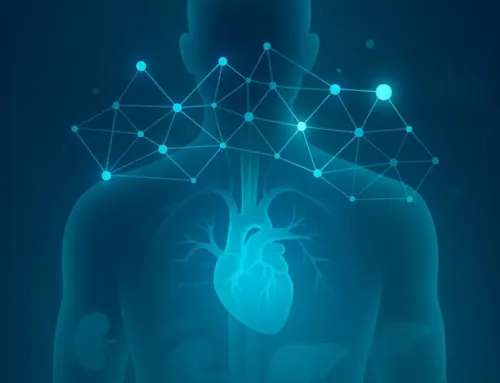
Approx. read time: 8.5 min.
Post: The Importance of a Healthy Musculoskeletal System for Longevity and Overall Health
Healthy musculoskeletal system for longevity. The musculoskeletal system, comprising bones, muscles, tendons, ligaments, and joints, serves as the framework of our bodies. It not only provides structure but is also responsible for movement, stability, and protection of our vital organs. While its primary role is mechanical, a healthy musculoskeletal system is intricately connected to overall well-being and longevity. Ensuring the health of this system goes beyond just maintaining physical mobility—it significantly impacts the proper functioning of other bodily systems and contributes to a higher quality of life as we age.
In this article, we will explore the significance of a healthy musculoskeletal system for longevity, and how its condition influences other systems in the body, including the cardiovascular, nervous, endocrine, immune, and digestive systems.
1. The Musculoskeletal System: An Overview-Healthy musculoskeletal system for longevity
The musculoskeletal system is composed of several key components:
- Bones: Provide structure and protection for the organs, act as reservoirs for minerals, and play a crucial role in red blood cell production.
- Muscles: Enable movement by contracting and relaxing in response to signals from the nervous system.
- Tendons: Connect muscles to bones, facilitating movement.
- Ligaments: Connect bones to other bones, providing stability to the joints.
- Joints: Allow for mobility, enabling a wide range of movements, from walking to typing.
These components work together to support physical activity, which is essential for maintaining overall health. However, the importance of a healthy musculoskeletal system extends beyond simple mobility; it affects multiple other systems in the body, contributing to longevity and a better quality of life.
2. The Role of the Musculoskeletal System in Longevity
2.1 Mobility and Independence
One of the most obvious reasons why a healthy musculoskeletal system is critical for longevity is its role in maintaining mobility. As we age, maintaining physical independence is key to preserving the quality of life. A strong musculoskeletal system allows older adults to continue performing everyday activities, such as walking, climbing stairs, and carrying groceries. Reduced mobility, often caused by conditions like osteoporosis, arthritis, or muscle degeneration, can lead to a sedentary lifestyle, which is associated with a host of negative health outcomes, including obesity, cardiovascular disease, and metabolic disorders.
2.2 Preventing Falls and Injuries
A robust musculoskeletal system also helps prevent falls and injuries, particularly in older adults. Falls are a major cause of disability and death in the older population. They often result in fractures, most commonly in the hip, which can lead to long-term immobility and increased mortality rates. Strong bones and muscles, along with good balance and coordination, are essential in preventing these dangerous incidents.
2.3 Enhancing Lifespan through Physical Activity
Physical activity is one of the most powerful tools for enhancing lifespan, and the musculoskeletal system is directly responsible for facilitating movement. Regular exercise helps maintain muscle mass, bone density, and joint flexibility, all of which decline naturally with age. Moreover, exercise has been shown to reduce the risk of chronic diseases, improve mental health, and promote healthy aging. By keeping the musculoskeletal system in top condition, individuals can continue to engage in physical activities that support their overall health and longevity.
3. Impact of the Musculoskeletal System on Other Body Systems-Healthy musculoskeletal system for longevity
3.1 Cardiovascular System
A healthy musculoskeletal system plays a vital role in maintaining cardiovascular health. Exercise, which depends on the musculoskeletal system, stimulates the cardiovascular system by increasing heart rate and improving circulation. When muscles contract during physical activity, they help pump blood back to the heart, improving blood flow and reducing the risk of cardiovascular diseases like hypertension, stroke, and heart disease.
In addition, weight-bearing exercises—such as walking, running, and resistance training—help to lower cholesterol levels and blood pressure. These activities also enhance the elasticity of blood vessels, promoting better circulation. Conversely, a sedentary lifestyle due to poor musculoskeletal health can lead to cardiovascular complications, such as atherosclerosis and heart failure.
3.2 Nervous System
The relationship between the musculoskeletal and nervous systems is deeply interconnected. The nervous system controls the contraction and relaxation of muscles, allowing for movement. Additionally, proprioception—our sense of body position and movement—is governed by the nervous system in conjunction with muscles and joints. Maintaining musculoskeletal health is crucial for preserving this connection.
Injuries or degeneration in the musculoskeletal system, such as nerve impingement or spinal misalignments, can directly affect the nervous system, leading to pain, tingling, or loss of motor function. Furthermore, chronic musculoskeletal pain can alter the brain’s pain perception pathways, leading to conditions such as fibromyalgia or chronic pain syndromes. Maintaining muscle and joint health, through regular exercise and proper posture, helps prevent these issues and ensures that the nervous system functions optimally.
3.3 Endocrine System
The musculoskeletal system also influences the endocrine system, which is responsible for hormone production and regulation. For instance, physical activity stimulates the release of hormones such as endorphins, which improve mood and reduce stress. It also promotes the production of insulin, which helps regulate blood sugar levels and prevents conditions like diabetes.
Moreover, muscles serve as an endocrine organ by releasing myokines—hormone-like molecules—during exercise. Myokines have anti-inflammatory effects, promote fat metabolism, and help regulate the immune response. A decline in musculoskeletal health, leading to reduced physical activity, can diminish the production of these beneficial molecules, contributing to metabolic disorders and inflammation.
3.4 Immune System
The health of the musculoskeletal system also has a significant impact on the immune system. Regular physical activity, facilitated by strong muscles and bones, boosts immune function by promoting the circulation of immune cells throughout the body. This increased circulation allows immune cells to detect and respond to pathogens more efficiently, reducing the risk of infections and diseases.
In contrast, poor musculoskeletal health can lead to a sedentary lifestyle, which weakens the immune system. Studies have shown that individuals who engage in regular physical activity have a lower risk of developing chronic diseases, such as cancer, that are linked to immune system dysfunction.
3.5 Digestive System
While the connection between the musculoskeletal system and the digestive system may not be immediately apparent, maintaining musculoskeletal health is crucial for proper digestion. Regular physical activity helps stimulate the digestive system, promoting peristalsis—the series of muscle contractions that move food through the digestive tract. This prevents constipation and improves nutrient absorption.
In addition, poor posture, often a result of musculoskeletal issues such as weak core muscles or spinal misalignment, can negatively impact digestion. Slouching or hunching over can compress the abdominal organs, slowing digestion and causing discomfort. Strengthening the core muscles and maintaining good posture can alleviate these issues and promote better digestive health.
4. Common Musculoskeletal Disorders and Their Systemic Impact
While maintaining a healthy musculoskeletal system is essential for longevity, several disorders can negatively impact this system and, in turn, affect other bodily systems.
4.1 Osteoporosis
Osteoporosis is a condition characterized by weak and brittle bones, making individuals more susceptible to fractures. It is especially prevalent among older adults and women post-menopause. The consequences of osteoporosis extend beyond the skeletal system. Hip fractures, for example, can lead to long-term immobility, increasing the risk of cardiovascular disease, deep vein thrombosis, and pneumonia.
4.2 Osteoarthritis
Osteoarthritis, a degenerative joint disease, affects millions of people worldwide. It leads to pain, stiffness, and reduced mobility. This decline in mobility can result in a sedentary lifestyle, contributing to obesity, cardiovascular disease, and mental health disorders such as depression and anxiety. The chronic pain associated with osteoarthritis can also disrupt sleep, leading to fatigue and a weakened immune response.
4.3 Muscle Atrophy
Muscle atrophy, or the loss of muscle mass, can occur due to aging, injury, or a sedentary lifestyle. This condition not only affects mobility but also contributes to metabolic disorders such as insulin resistance and type 2 diabetes. Muscle loss leads to a reduction in the body’s ability to burn calories, resulting in weight gain and increased fat deposition around vital organs, which further impairs their function.
5. Strategies for Maintaining Musculoskeletal Health-Healthy musculoskeletal system for longevity
To promote longevity and ensure the health of the musculoskeletal system, it is important to adopt the following strategies:
- Regular Exercise: Engage in a combination of aerobic exercise, strength training, flexibility exercises, and balance training. Weight-bearing activities such as walking or resistance training help maintain bone density, while muscle-strengthening exercises improve posture and balance, reducing the risk of falls.
- Proper Nutrition: A diet rich in calcium, vitamin D, and protein supports bone and muscle health. Calcium and vitamin D are essential for bone mineralization, while protein provides the building blocks for muscle repair and growth.
- Posture and Ergonomics: Maintain good posture during daily activities and ensure that workspaces are ergonomically designed to reduce strain on the musculoskeletal system.
- Injury Prevention: Take steps to prevent injuries by using proper techniques during exercise, wearing appropriate footwear, and avoiding repetitive motions that can lead to overuse injuries.
- Adequate Rest and Recovery: Allow time for rest and recovery, as overexertion can lead to injury and hinder muscle and joint health. Ensure that you get enough sleep, which is critical for tissue repair and overall health.
Conclusion-Healthy musculoskeletal system for longevity
The musculoskeletal system is the foundation of our physical well-being, supporting movement, stability, and protection of vital organs. Its health is not only essential for maintaining mobility and independence as we age but also for promoting longevity by positively influencing other body systems. From cardiovascular health to immune function, the condition of the musculoskeletal system affects every aspect of our well-being. By prioritizing musculoskeletal health through regular exercise, proper nutrition, and injury prevention, we can ensure a long, healthy life filled with vitality and physical independence.
A healthy musculoskeletal system is more than just a matter of mobility—it’s a cornerstone of overall health, contributing to a longer and better quality of life.
Related Videos:
Related Posts:
The Influence of Vitamin D and C on Bone Density and Health
Importance of Cardio, Strength, and Stability for All Ages
What Foods and Nutrients Can Boost Your Immune System?
Unraveling the Secrets of Longevity: Integrating Science and Art for a Healthier Life
Your DNA isn’t Destiny: How Lifestyle Choices can Extend your Life









